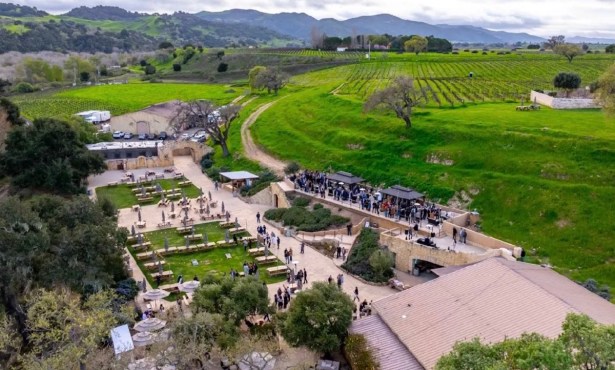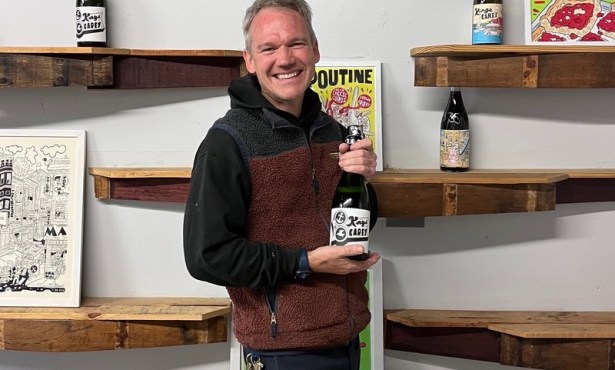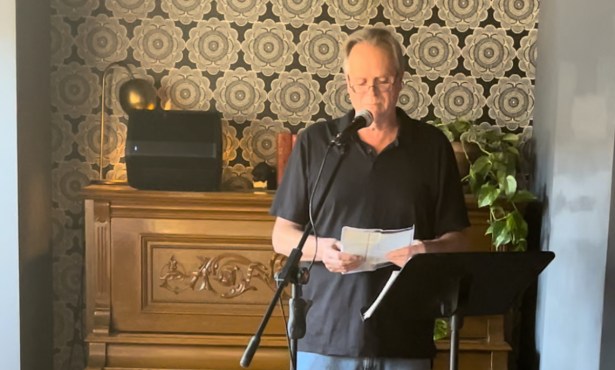‘Wine By Design’ Author Victor Geraci Talks Wine Country Future
New Book Analyzes History and Trajectory of Santa Barbara County’s Wine Industry

When historian and author Victor Geraci was writing Wine By Design: Santa Barbara’s Quest for Terroir, his analysis of our region’s wine industry was primarily optimistic, even while showing how regulations and real-estate prices hampered its growth. In retelling the history that he first revealed in his 2004 book Salud! The Rise of Santa Barbara’s Wine Industry — which was the 72-year-old’s doctoral dissertation at UCSB — and then covering the ensuing 15-plus years, Geraci showed how entrepreneurial vintners evolved in the face of land-use restrictions, environmental concerns, and the byzantine web of national alcohol laws.
“When I wrote this book, it was a story that was very hopeful,” explained Geraci on a phone call recently, when the Temecula Valley resident was staying at the Flying Flags RV resort in Buellton. “Now I have no idea,” said Geraci, whose book hit the streets on March 18. “I wish I had a magic ball. I just don’t know.”
His worries, of course, relate to the COVID-19 pandemic, which is gut-punching the Santa Barbara County wine industry much like it’s done to economic sectors worldwide. He fears that the lack of direct sales and the damage to the tourism industry may be too much to bear for many of the small estate wineries and boutique brands that sell primarily through urban tasting rooms. “I don’t know how those wineries are going to survive without full-fledged tourism,” he said.
Get the top stories in your inbox by signing up for our daily newsletter, Indy Today.

Geraci’s book explains that, prior to the pressures of COVID, the rural vineyards-plus-urban tasting room model was a functional arrangement. “It kept everyone politically happy, and the wine industry kept thriving,” he explained. “It looked like a great negotiation. There was a compromise that seemed to be working. COVID upset that compromise.”
But the “compromise” — in which the County of Santa Barbara remains very restrictive on estate winery development while areas like the Funk Zone, Lompoc Wine Ghetto, and Los Olivos welcome tasting rooms in droves — was already showing other faults. “There are amazing wines, but when you go into the Funk Zone on a warm day when there’s no COVID and it’s just filled with people drinking, that’s a problem,” said Geraci. He believes that the wine industry will face increasing opposition the more that it is disconnected from its rural roots and the more that it promotes excess over moderate consumption.
The agricultural, wine-with-food connections are critical to Geraci, who “grew up in vineyards.” He comes from a long line of Sicilians who worked in the raisin and table grape vineyards of El Cajon. Those raisins were the subject of his Master’s thesis when he went back to grad school at San Diego State after teaching middle school in Santee for 20 years.
Upon getting his doctorate from UCSB, Geraci worked as the food and wine expert in the Bancroft Library at UC Berkeley, where he expanded the already extensive oral history collection. He retired in 2013 but never stopped working, and he is now completing another book on John DeLuca of the Wine Institute’s late 20th-century fight against neo-Prohibitionism. Geraci also started an endowment at the UCSB Library to help collect more materials related to Santa Barbara County wine history.
He doesn’t think that the restrictions on winery development were all bad. “In some ways, those were good because it kept Santa Barbara from becoming another Napa, where you can’t make a left turn on Highway 29 anymore,” said Geraci. But he laments that the once-held belief that Santa Barbara County would one day surpass 40,000 acres of vineyards seems unlikely today, when just around 20,000 acres exist.
Given today’s troubled times, perhaps that slower growth will prove a blessing. If Geraci has learned anything in his decades of analyzing the wine industry, it’s that vintners are survivors. “These grape growers and wine producers are going to do whatever it takes,” he said. “They are ingenious in how they adapt to new situations. We have to remember that. This is a real business-savvy group of people and they have adapted through time. They are so entrepreneurial, but they’ve never been dealt COVID. The bottom line is to adapt.”
Wine By Design: Santa Barbara’s Quest for Terroir (University of Nevada Press; $39.95; 264 pages) can be ordered through unpress.nevada.edu
Every day, the staff of the Santa Barbara Independent works hard to sort out truth from rumor and keep you informed of what’s happening across the entire Santa Barbara community. Now there’s a way to directly enable these efforts. Support the Independent by making a direct contribution or with a subscription to Indy+.




You must be logged in to post a comment.